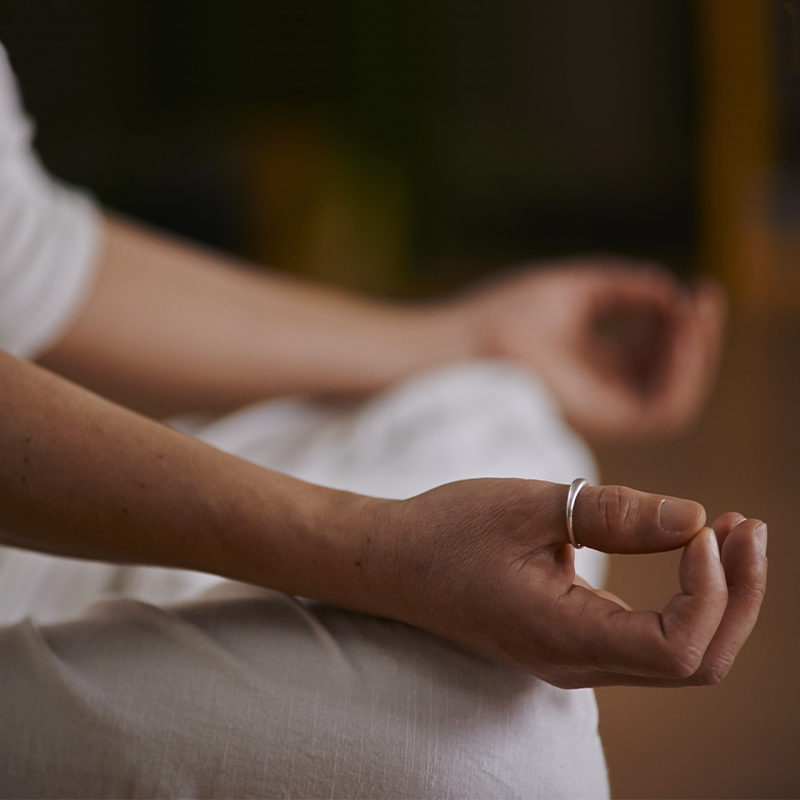These are exciting times for anybody interested in the science of meditation, as research into the subject has grown tremendously over the last couple of decades. And yet, meditation is such a deep and multi-faceted subject that the majority of this research has barely scratched the surface. In most cases, the practices have been secularized in order to study specific characteristics such as neural or other physiological correlates of meditative states, or were looked at with a specific goal in mind such as therapeutic applications. But the practice and promise of meditation goes far beyond what has been investigated so far.
A task force of meditation researchers and teachers, including several representatives from IONS, organized the Future of Meditation Research (FOMR) project to approach the subject from new angles and to stretch the boundaries of what was considered possible in the field of meditation research. The working group met regularly for four years to brainstorm on the subject, review the state of the field, and to develop recommendations for moving the science of meditation forward.
They quickly discovered that evaluation of the more transcendent or extraordinary experiences or states of consciousness were generally lacking in the meditation research field. The reasons for this range from the difficulty of measuring them, to a careful effort to make meditation research mainstream and not biased by the subjectivity of metaphysics, to concerns about what these experiences imply about the nature of reality that are potentially challenging to the mainstream scientific worldview. Before these topics could be approached in depth, the team needed to discover exactly how prevalent they are, which they did with a survey of over 1,000 meditators.
The survey asked the meditators if they had a variety of specific experiences during meditation and how often they had them. Many of these experiences are commonly acknowledged even in more mainstream descriptions of meditation, such as feelings of peace and tranquility or a loss of one’s usual sense of time. But other experiences are more profound, such as a sense of oneness with the universe; out of body experiences; spiritual transmission from teacher to student; dyadic, group, and relational experiences; experiences of non-physical energies (e.g. chi, kundalini, shakti); extrasensory perception; synchronicities; or experiences of God, deities, and other non-physical entities. After receiving confirmation that many of these experiences were indeed present, and relatively common among meditation practitioners, the next step was to determine how best to study them in a way that honors the profundity of the inner experience while still maintaining scientific rigor. A follow-up study in collaboration with the University of Virginia examining these experiences in meditation retreats, with students of Deepak Chopra, Richard Miller, Thomas Hübl, and others, is currently in the data-analysis phase.
The findings of this study were published in the article Future directions in meditation research: Recommendations for expanding the field of contemplative science in PLOS One by IONS Senior Fellow and former President/CEO Cassandra Vieten, with co-authors IONS Scientists Helané Wahbeh, Dean Radin, and Arnaud Delorme, along with other members of the Future of Meditation Working Group. This group was comprised of leading meditation scholars from universities, research centers, and meditation centers across the U.S. The paper outlines the results of the survey and also includes recommendations for researchers approaching these important facets of meditation in future research. IONS has long considered meditation to be a key practice for cultivating positive transformations in consciousness, and one of the most effective ways of experiencing for oneself the central IONS hypothesis of the interconnected nature of being.
The Future of Meditation Research project also resulted in an online course for researchers interested in learning more, including such topics in their research and an extensive resource list for potential research questions around the domains highlighted in the paper. It is our hope that the Future of Meditation Research project will continue to inspire other researchers in their efforts to carry this work forward for many years to come. You can learn more about the Future of Meditation project, the published paper, the online course, and resources by clicking here.
